
How to Use Arduino UNO: Examples, Pinouts, and Specs
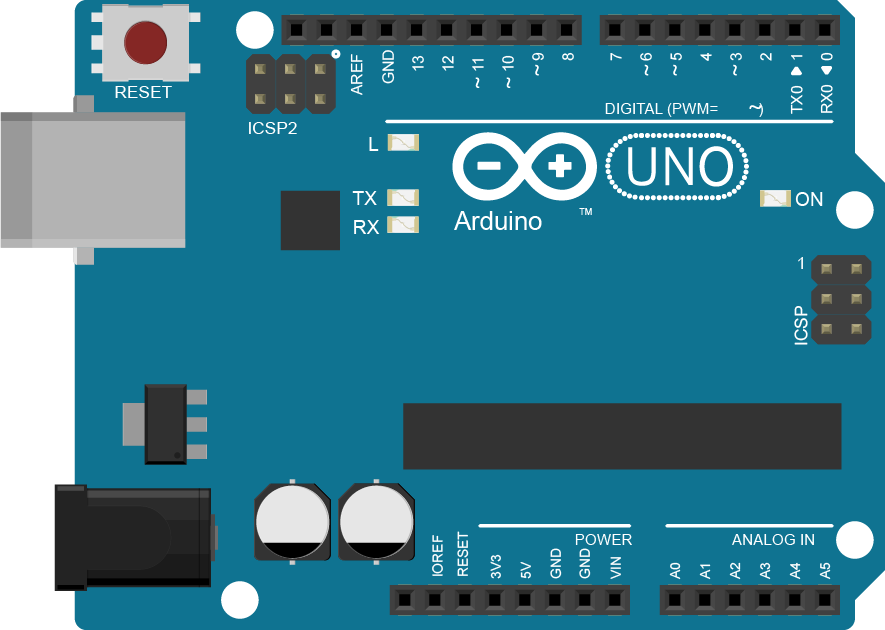
 Design with Arduino UNO in Cirkit Designer
Design with Arduino UNO in Cirkit DesignerIntroduction
The Arduino UNO, manufactured by Arduino, is a microcontroller board based on the ATmega328P. It is one of the most popular and versatile development boards in the Arduino ecosystem, designed for both beginners and experienced developers. The board is widely used for building digital devices and interactive objects that can sense and control the physical world. Its simplicity, open-source nature, and extensive community support make it an ideal choice for prototyping and educational purposes.
Explore Projects Built with Arduino UNO
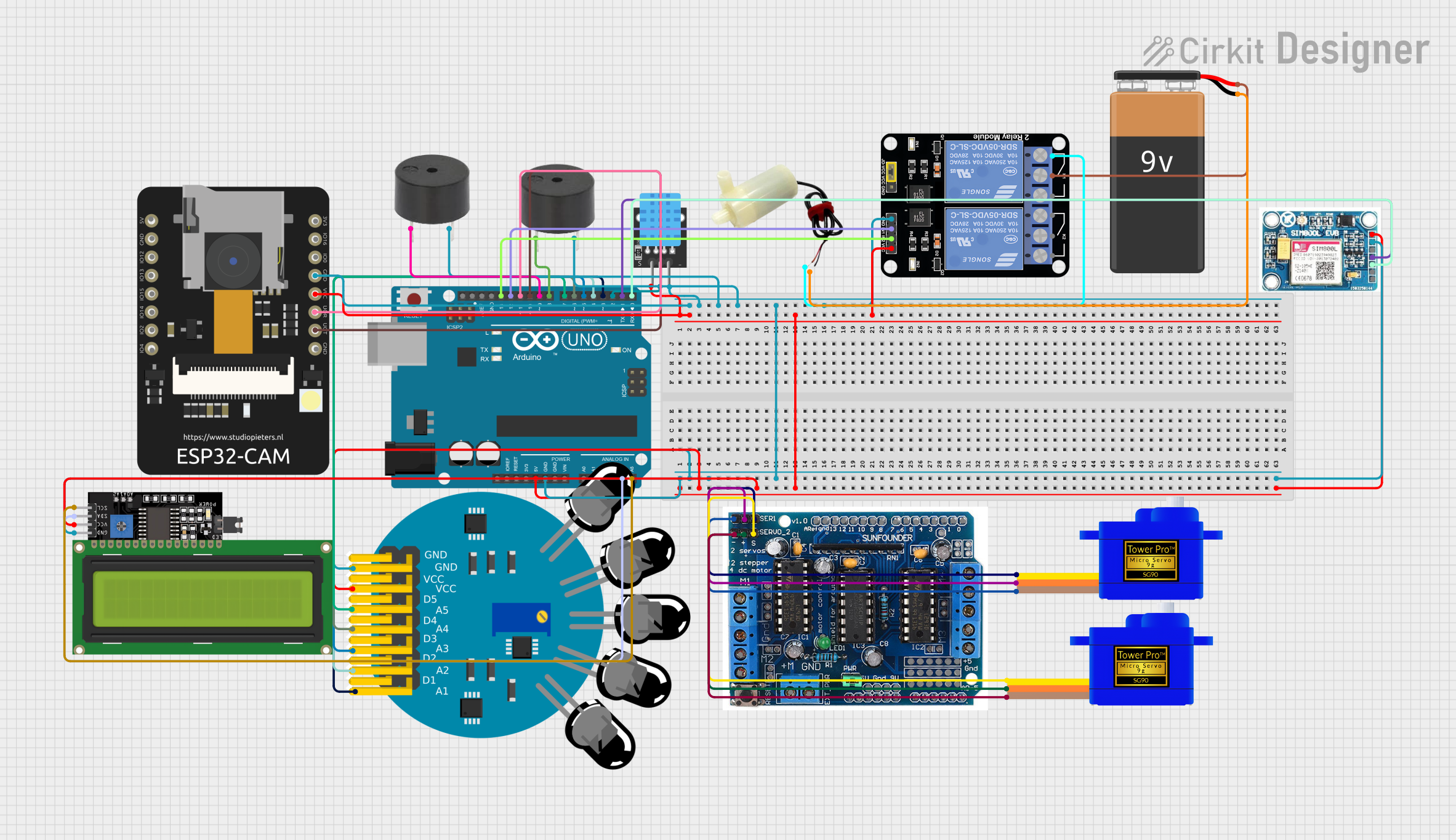
 Open Project in Cirkit Designer
Open Project in Cirkit Designer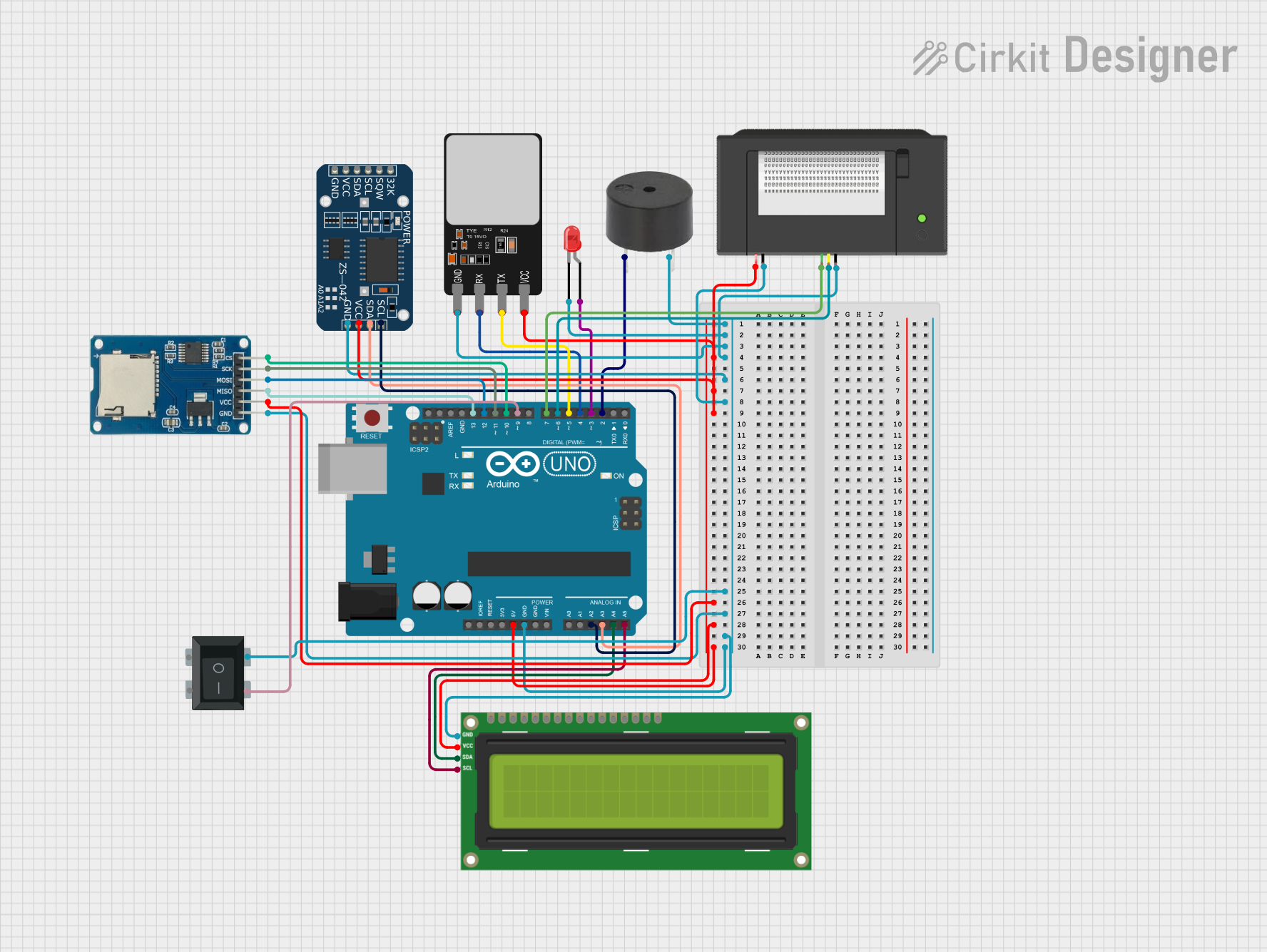
 Open Project in Cirkit Designer
Open Project in Cirkit Designer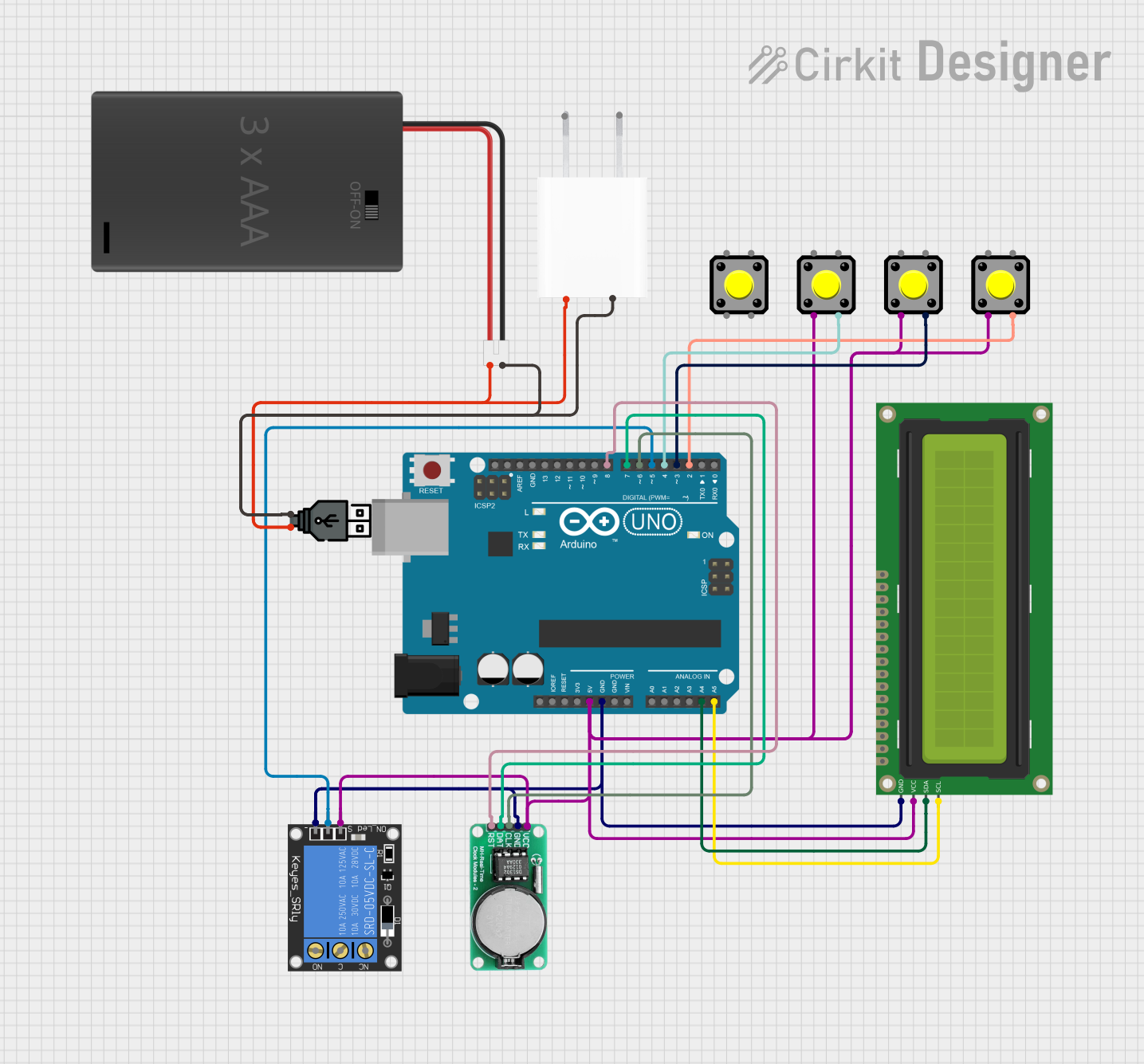
 Open Project in Cirkit Designer
Open Project in Cirkit Designer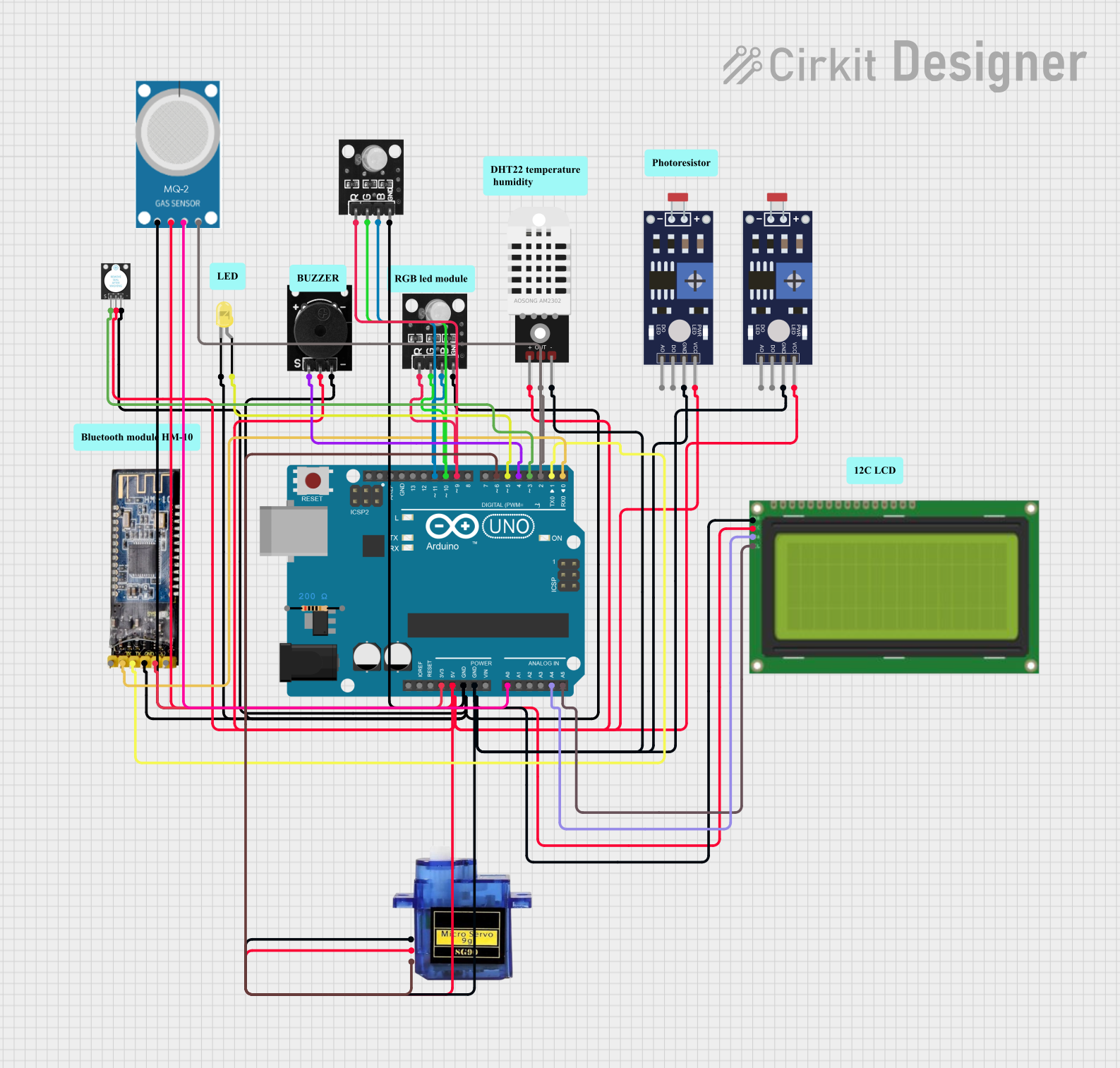
 Open Project in Cirkit Designer
Open Project in Cirkit DesignerExplore Projects Built with Arduino UNO

 Open Project in Cirkit Designer
Open Project in Cirkit Designer
 Open Project in Cirkit Designer
Open Project in Cirkit Designer
 Open Project in Cirkit Designer
Open Project in Cirkit Designer
 Open Project in Cirkit Designer
Open Project in Cirkit DesignerCommon Applications and Use Cases
- Robotics and automation projects
- IoT (Internet of Things) devices
- Sensor-based systems (e.g., temperature, motion, light sensing)
- Home automation
- Educational tools for learning programming and electronics
- Prototyping and proof-of-concept development
Technical Specifications
The Arduino UNO is equipped with a range of features that make it a powerful and flexible tool for a variety of applications.
Key Technical Details
| Specification | Value |
|---|---|
| Microcontroller | ATmega328P |
| Operating Voltage | 5V |
| Input Voltage (recommended) | 7-12V |
| Input Voltage (limit) | 6-20V |
| Digital I/O Pins | 14 (6 provide PWM output) |
| Analog Input Pins | 6 |
| DC Current per I/O Pin | 20 mA |
| Flash Memory | 32 KB (0.5 KB used by bootloader) |
| SRAM | 2 KB |
| EEPROM | 1 KB |
| Clock Speed | 16 MHz |
| USB Connector | Type-B |
| Dimensions | 68.6 mm x 53.4 mm |
| Weight | 25 g |
Pin Configuration and Descriptions
The Arduino UNO has a total of 28 pins, including digital, analog, power, and communication pins. Below is a detailed description of the pin configuration:
Digital Pins
| Pin Number | Functionality | Description |
|---|---|---|
| 0 (RX) | UART Receive | Used for serial communication (input) |
| 1 (TX) | UART Transmit | Used for serial communication (output) |
| 2-13 | General Purpose I/O (GPIO) | Digital input/output pins |
| 3, 5, 6, 9, 10, 11 | PWM Output | Pulse Width Modulation capable pins |
Analog Pins
| Pin Number | Functionality | Description |
|---|---|---|
| A0-A5 | Analog Input | Read analog signals (0-5V) |
Power Pins
| Pin Name | Functionality | Description |
|---|---|---|
| VIN | Input Voltage | External power supply input (7-12V) |
| 5V | Regulated 5V Output | Powers external components |
| 3.3V | Regulated 3.3V Output | Powers low-voltage components |
| GND | Ground | Common ground for the circuit |
| RESET | Reset | Resets the microcontroller |
Communication Pins
| Pin Name | Functionality | Description |
|---|---|---|
| SDA | I2C Data | Data line for I2C communication |
| SCL | I2C Clock | Clock line for I2C communication |
| SPI (10-13) | SPI Communication | Serial Peripheral Interface pins |
Usage Instructions
The Arduino UNO is straightforward to use and can be programmed using the Arduino IDE. Below are the steps to get started and some best practices to follow.
How to Use the Arduino UNO in a Circuit
- Power the Board: Connect the Arduino UNO to your computer using a USB Type-B cable or use an external power supply (7-12V) via the VIN pin or DC barrel jack.
- Install the Arduino IDE: Download and install the Arduino IDE from the official Arduino website.
- Connect the Board: Open the Arduino IDE, select the correct board ("Arduino UNO") and port from the "Tools" menu.
- Write and Upload Code:
- Write your program (sketch) in the Arduino IDE.
- Click the "Upload" button to transfer the code to the board.
- Connect Components: Use jumper wires to connect sensors, actuators, and other components to the appropriate pins on the board.
- Monitor Output: Use the Serial Monitor in the Arduino IDE to debug and view data from the board.
Example Code: Blinking an LED
The following example demonstrates how to blink an LED connected to pin 13 of the Arduino UNO.
// This program blinks an LED connected to pin 13 of the Arduino UNO.
// The LED will turn on for 1 second and off for 1 second in a loop.
void setup() {
pinMode(13, OUTPUT); // Set pin 13 as an output pin
}
void loop() {
digitalWrite(13, HIGH); // Turn the LED on
delay(1000); // Wait for 1 second
digitalWrite(13, LOW); // Turn the LED off
delay(1000); // Wait for 1 second
}
Important Considerations and Best Practices
- Power Supply: Ensure the input voltage does not exceed the recommended range (7-12V) to avoid damaging the board.
- Pin Current Limits: Do not exceed 20 mA per I/O pin to prevent overheating or damage.
- Static Electricity: Handle the board with care to avoid static discharge, which can damage the microcontroller.
- Breadboard Use: Use a breadboard for prototyping to avoid soldering and make connections easier to modify.
Troubleshooting and FAQs
Common Issues and Solutions
Problem: The Arduino UNO is not recognized by the computer.
- Solution: Ensure the USB cable is properly connected and functional. Install the necessary drivers from the Arduino IDE.
Problem: The code does not upload to the board.
- Solution: Check that the correct board and port are selected in the Arduino IDE. Ensure no other program is using the COM port.
Problem: The board is not powering on.
- Solution: Verify the power source and connections. If using an external power supply, ensure it is within the recommended voltage range.
Problem: Components connected to the board are not functioning.
- Solution: Double-check the wiring and ensure the components are compatible with the Arduino UNO.
FAQs
Q: Can the Arduino UNO be powered by batteries?
- A: Yes, you can use a 9V battery connected to the DC barrel jack or VIN pin.
Q: Can I use the Arduino UNO for wireless communication?
- A: Yes, you can use external modules like Bluetooth, Wi-Fi (e.g., ESP8266), or RF modules for wireless communication.
Q: Is the Arduino UNO compatible with shields?
- A: Yes, the Arduino UNO is compatible with a wide range of shields designed for various applications.
Q: How do I reset the Arduino UNO?
- A: Press the reset button on the board or connect the RESET pin to GND momentarily.
By following this documentation, you can effectively use the Arduino UNO for a variety of projects and troubleshoot common issues with ease.